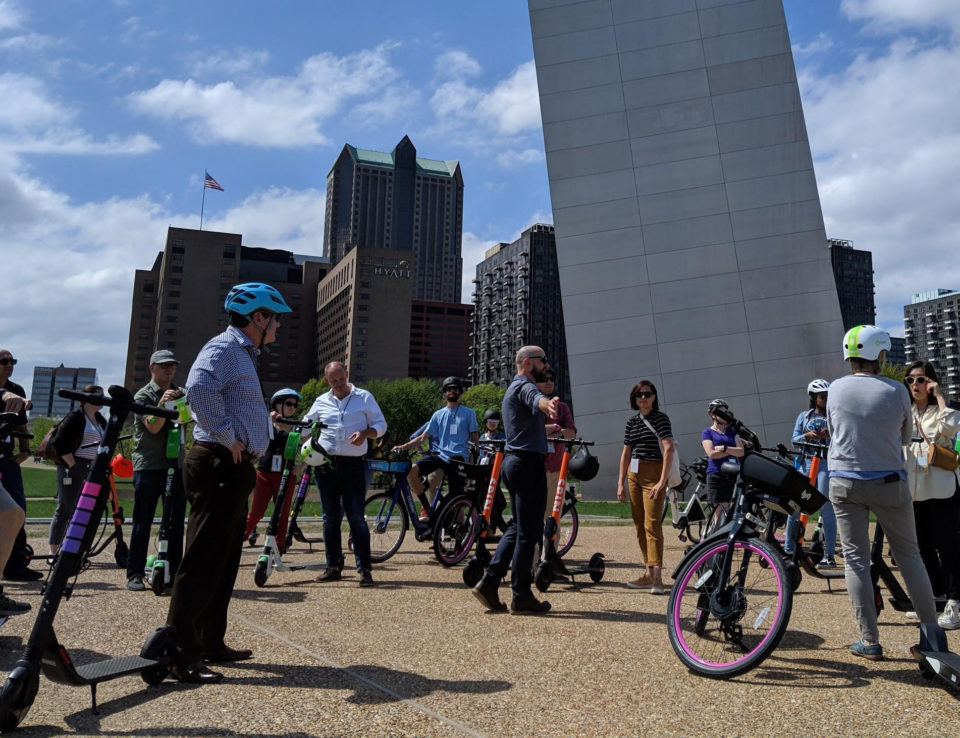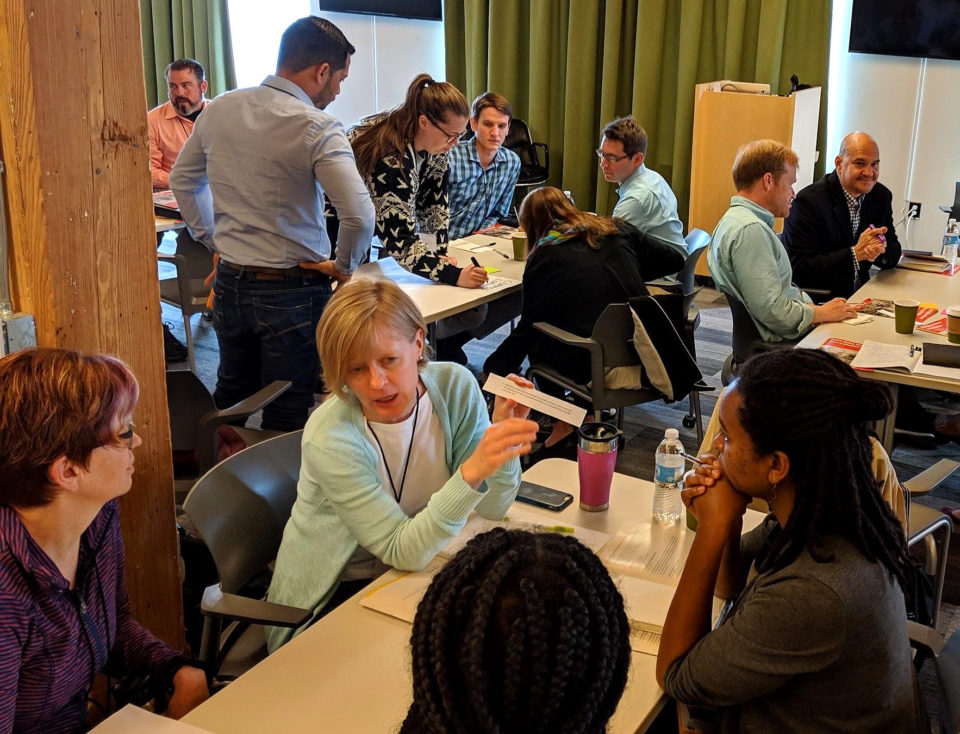The relatively volatile landscape of shared micromobility, emblematic in the near-replacement of dockless bikes with e-scooters from 2017 to 2018, has a dual impact. New shared micromobility devices have the potential to transform our cities and how people travel. But these changes also force governments—tasked with simultaneously regulating the new operators and protecting the public good—to play a fast-paced game of catch up. As shared micromobility systems are live-tested on users, governments have to quickly devise new frameworks to regulate them, ones that protect the public interest while also making room for the promise of innovative transportation on their streets.
This dynamic was unraveled and examined during the 2nd Annual Bike Share Roundtable in St. Louis, MO, which was led by NACTO and the Better Bike Share Partnership, and co-sponsored by the cities of Memphis and St. Louis. This cities-only event was an opportunity for peers across the NACTO network to meet and discuss the rapidly-evolving state of practice for regulating shared micromobility. Building off the success of last year’s Bike Share Roundtable in Austin, staff from 30 cities explored:
1. Strengthening Knowledge of Scooter Safety
Apart from the need to provide users safe places to ride (think bike lanes and smooth surfaces), a lot is still unknown about scooter safety. In order for cities to develop effective regulatory frameworks for these new devices, it is imperative local governments have access to information about health risks, crash history, equipment quality, and maintenance processes. As these devices are being deployed for public shared use, it is important that operators provide cities with information pertinent to scooter safety.

We invited six companies to demonstrate their newest bike and e-scooter models during a tour through downtown St. Louis.
2. Ensuring Access for More Users
Shared micromobility has the potential to expand the reach of transportation networks, but cities and operators still need to work together to ensure the accessibility improvements promised by micromobility vehicles are achieved. This includes how to limit sidewalk riding, streamline curb management procedures, and increase access to shared micromobility systems for persons with disabilities.
3. Building Equity into Regulatory Frameworks
The pull between public and private goals is most pronounced in conversations about equity. For example, private sector interests are compelled to put their vehicles in dense, more profitable areas, whereas cities may prioritize coverage in underserved areas that would benefit from increased transportation options. Practitioners discussed this natural tension throughout the event, continually circling back to the importance of building equity into regulatory frameworks in order to ensure operators are held accountable and contribute to achieving public-minded goals.

Participants diving into the nitty gritty on shared micromobility regulations.
4. Collecting and Applying Data to Drive Decision-making
Data is paramount to planning and regulating a safe, accessible, and equitable shared micromobility system. Cities need consistent access to accurate data in order to develop systems that put public interests first. New transportation service operators are generating mobility data at an unprecedented scale. How to access this data and maintain user privacy is a central conversation so that data can continue to inform major planning decisions.
5. Determining When Compromise is Appropriate
How can cities leverage their regulatory power to achieve public goals without jeopardizing the promise of private sector innovations? Balancing city and operator goals rests on compromise, but what this compromise looks like in practice, and how it can be codified through permits and regulations, is still being established. Cities are exploring how in a number of ways, notably by integrating operators with the planning process to gain insights, identify shared interests, and develop regulations that allow cities to hold a firm line for public goals while also creating flexible frameworks for operators to grow.
:::::
The 2nd Annual Bike Share Roundtable was a thought-provoking and illuminating forum for practitioners to collaboratively discuss best practices, highlight policy gaps, and identify solutions for regulating shared micromobility systems. The range of topics and conversations from this event will set the framework for an update this year to NACTO’s Guidelines for Managing Shared Micromobility.
Thank you to the Better Bike Share Partnership, St. Louis, Memphis, and the 30 participating cities!